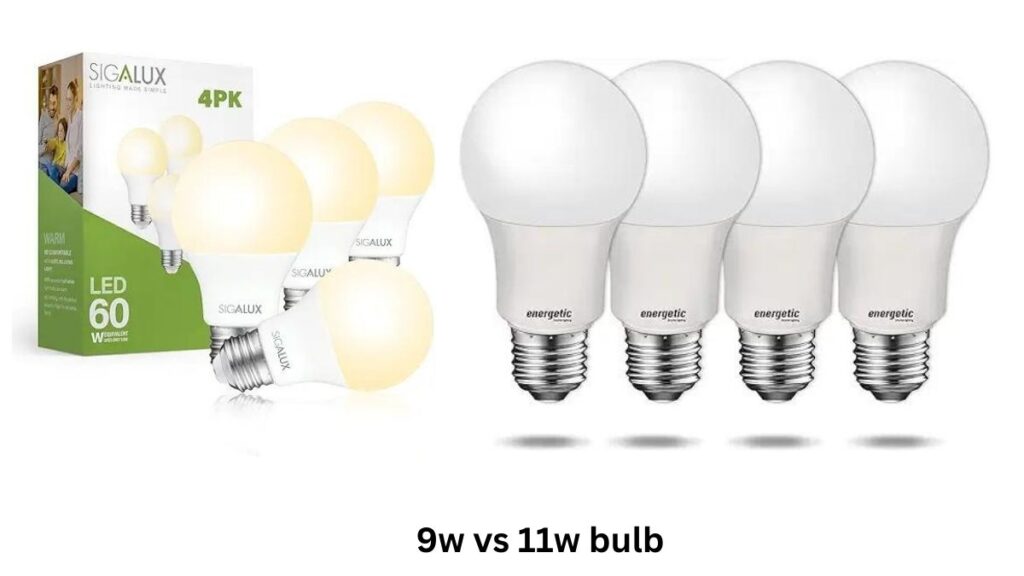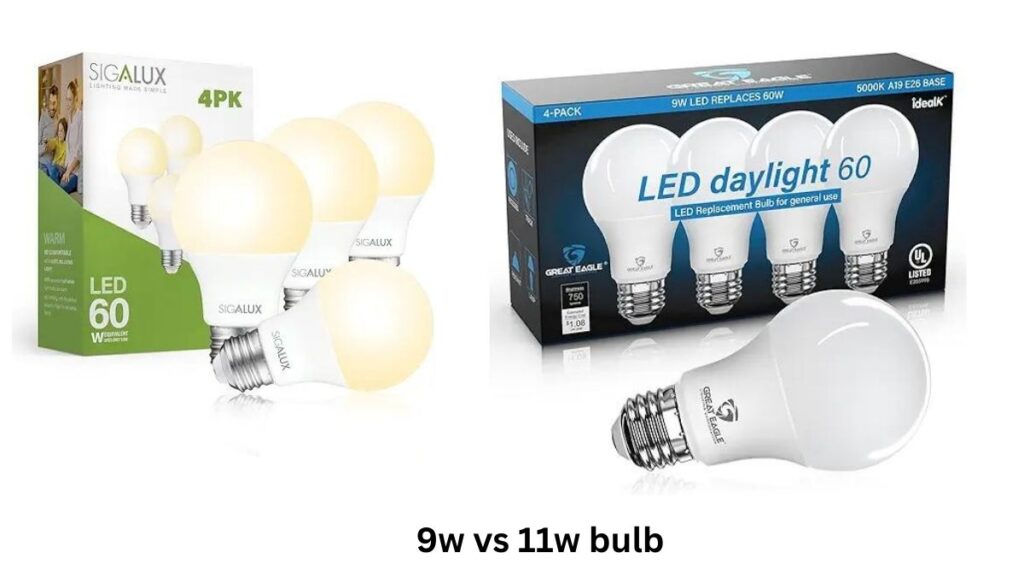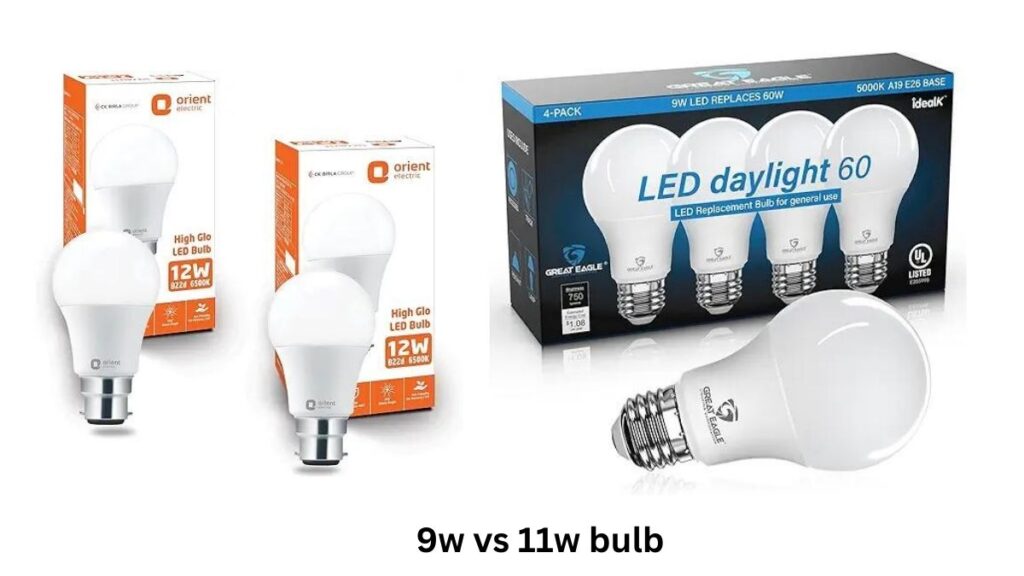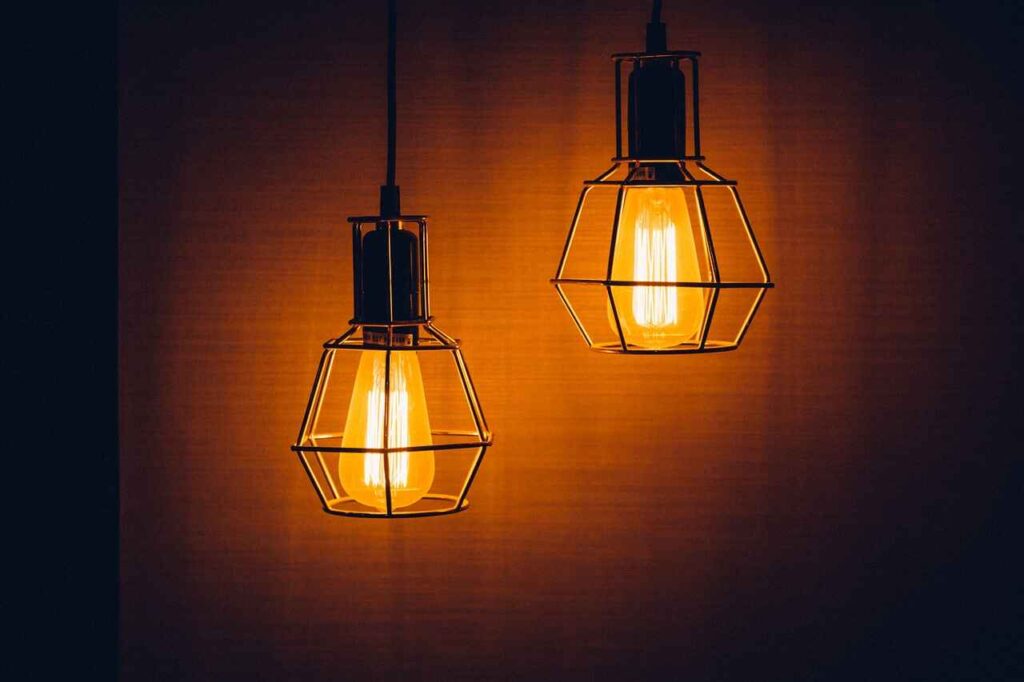Lighting technology has come a long way, and choosing the right bulb can make a significant difference in your energy consumption and lighting quality. Did you know that switching to energy-efficient bulbs can reduce your lighting energy use by up to 75%? In this article, we’ll dive into the world of energy-efficient lighting, specifically comparing 9W vs 11W bulbs. Whether you’re renovating your home or simply looking to make smarter energy choices, understanding the nuances between these two options will help you illuminate your space effectively while potentially saving on your electricity bill. Let’s shed some light on the subject!
Understanding Wattage and Lumens
When you’re shopping for light bulbs, two terms that often come up are wattage and lumens. Both are crucial in understanding how bright a bulb will be and how much energy it will consume.
Definition of Watts and Lumens
- Watts refer to the amount of power a bulb uses. For example, a 9W bulb uses 9 watts of power, while an 11W bulb uses 11 watts.
- Lumens measure the brightness of the bulb, not the energy it consumes. More lumens mean more light.
How Wattage Relates to Energy Consumption
Wattage directly impacts energy consumption. A higher-wattage bulb like the 11W will consume more energy than a 9W bulb, but the difference might not be as significant with modern energy-efficient lighting like LEDs.
The Importance of Lumens in Determining Brightness
While wattage tells you about energy consumption, lumens tell you about brightness. This is why it’s better to focus on lumens when picking a bulb, especially if you’re aiming for specific lighting levels in a room.
Comparison of Traditional Incandescent Equivalents
Incandescent bulbs are energy-hungry compared to LEDs. A 60W incandescent bulb might give off similar lumens to a 9W or 11W LED bulb. That’s the beauty of modern lighting—better energy efficiency without compromising brightness!
Key Features of 9W Bulbs
1. Average Lumens Output for 9W Bulbs
A typical 9W LED bulb produces around 800-900 lumens, which is comparable to a 60W incandescent bulb.
2. Typical Applications and Suitable Room Sizes
9W bulbs are ideal for small to medium-sized rooms. If you want lighting for a bedroom, home office, or living room with moderate lighting needs, 9W bulbs work perfectly.
3. Energy Efficiency Rating
9W bulbs are extremely energy-efficient. Most are Energy Star-rated, meaning they meet strict guidelines for energy savings. They can cut down your electricity bills significantly, especially when replacing traditional bulbs.
4. Expected Lifespan and Long-Term Cost Implications
The average lifespan of a 9W LED bulb is around 15,000 to 25,000 hours. This long life means fewer replacements, which lowers overall costs over time. Plus, the lower wattage ensures you save money on your energy bills.
Exploring 11W Bulbs
i). Average Lumens Output for 11W Bulbs
An 11W LED bulb typically produces 1000-1100 lumens. This makes it a little brighter than its 9W counterpart.
ii). Ideal Usage Scenarios and Room Sizes
With its extra brightness, the 11W bulb is great for larger spaces like living rooms, kitchens, or offices. It’s also excellent for areas where more focused, task-oriented lighting is needed, such as over a kitchen counter or workspace.
iii). Energy Efficiency Comparison to 9W Bulbs
While 11W bulbs consume slightly more energy, the difference in consumption between 9W vs 11W bulbs is minimal. Both are energy-efficient, and the choice will largely depend on how much brightness you need.
iv). Lifespan and Cost-Effectiveness Over Time
Like 9W bulbs, 11W bulbs also have a long lifespan, generally between 15,000 and 25,000 hours. While they cost a little more upfront, the investment pays off over time with energy savings and fewer replacements.
Brightness Comparison: 9W vs 11W
1. Side-by-Side Lumens Comparison
The 9W bulb provides 800-900 lumens, while the 11W bulb offers 1000-1100 lumens. The difference in brightness is noticeable, but not dramatic.
2. Perceived Brightness Differences
In practical terms, the 11W bulb may feel slightly brighter, especially in larger rooms. However, for smaller spaces, you might not notice much of a difference.
3. Factors Affecting Brightness Beyond Wattage
Brightness isn’t just about wattage. The bulb’s design, color temperature, and placement all influence how bright a room feels. Factors like light fixture design and light distribution also play a role.
4. Real-World Examples of Where Each Shines Best
- 9W Bulb: Perfect for bedrooms, small offices, or accent lighting.
- 11W Bulb: Ideal for kitchens, living rooms, or larger spaces that need more light.
Energy Consumption and Cost Analysis
a). Annual Energy Usage Comparison
Let’s break down energy consumption. A 9W bulb uses 9 watts per hour, while an 11W bulb uses 11 watts. Over a year, the difference in energy consumption is small, but the 9W bulb will save a little more.
b). Calculating Potential Savings Over Bulb Lifespan
While the 9W bulb consumes less energy, both are cost-effective in the long run. Assuming you use your bulb for about 5 hours a day, the difference in your electricity bill between the two would be minor.
c). Initial Cost vs. Long-Term Savings
9W bulbs are generally a bit cheaper than 11W bulbs, but the long-term savings, particularly with energy-efficient lighting, come from reduced energy consumption and fewer bulb replacements.
d). Environmental Impact Considerations
Both 9W vs 11W LED bulbs are eco-friendly lighting options. They consume less energy, produce less heat, and last much longer than traditional incandescent bulbs, reducing waste and energy consumption.
Color Temperature and Quality of Light
Available Color Temperatures for Both Wattages
Both 9W and 11W bulbs are available in a range of color temperatures, from warm white to cool white. You can choose warmer tones for a cozy feel or cooler tones for a modern, energizing atmosphere.
How Color Temperature Affects Ambiance
Color temperature affects the mood of a room. Warmer tones (2700K-3000K) create a relaxing ambiance, perfect for bedrooms or living rooms. Cooler tones (5000K-6000K) are more suited for workspaces or kitchens where you need brighter, more focused light.
Light Quality and Color Rendering Index (CRI)
Both 9W and 11W bulbs generally have a high CRI (Color Rendering Index), meaning they show colors more naturally under their light. This is especially important for spaces where accurate color perception is needed, like art studios or makeup stations.
Choosing the Right Color Temperature for Different Spaces
For living rooms and bedrooms, a warm 2700K-3000K light is ideal. For kitchens or workspaces, go for a cooler 4000K-5000K light to boost focus and visibility.
Making the Right Choice for Your Needs
1. Assessing Your Lighting Requirements
The choice between a 9W and an 11W bulb depends on your lighting needs. Consider the size of the room and the type of lighting you prefer—ambient, task, or accent lighting.
2. Considering Room Size and Purpose
- Smaller rooms like bedrooms or bathrooms may only need a 9W bulb.
- Larger spaces like kitchens or living rooms benefit from the extra brightness of an 11W bulb.
3. Balancing Brightness, Energy Efficiency, and Cost
If you’re prioritizing brightness for a larger room, go with the 11W bulb. But for smaller rooms, the 9W bulb offers more than enough light while saving a bit more on energy costs.
4. Tips for Mixing and Matching Bulb Types in Your Space
It’s perfectly okay to mix 9W and 11W bulbs in your home. For example, use 11W bulbs in your kitchen or workspace, and stick to 9W bulbs for your bedroom or living room where softer lighting is better.
Conclusion
Choosing between a 9W vs 11W bulb depends on your specific lighting needs, room size, and goals for energy efficiency. While 11W bulbs offer slightly more brightness, 9W bulbs are more than enough for smaller spaces or when you prefer less intense lighting.
Remember, the key isn’t just in wattage, but in lumens, energy efficiency, and the overall ambiance you want to create. By considering these factors, you can make a smart, informed choice and create the perfect lighting environment in your home.
Whether you’re lighting up a cozy bedroom or a spacious kitchen, both 9W and 11W bulbs have their place. You can even check out energy-efficient LED options on popular marketplaces like Amazon to start your lighting upgrade journey today!
Related articles:
Hi, I’m Malik Suhail—an SEO expert, web designer, and passionate blogger with 2 years of experience. I specialize in crafting content that is not only informative but also tailored to meet the needs of my readers.
I write about diverse topics, always striving to simplify complex ideas and provide valuable insights that resonate with my audience. Whether it’s about SEO strategies, web design trends, or blogging tips, I am committed to delivering well-researched, practical, and easy-to-understand information.
My mission is to help readers navigate the digital world with confidence and clarity. I believe in adding value through authentic content that inspires action and delivers results.


